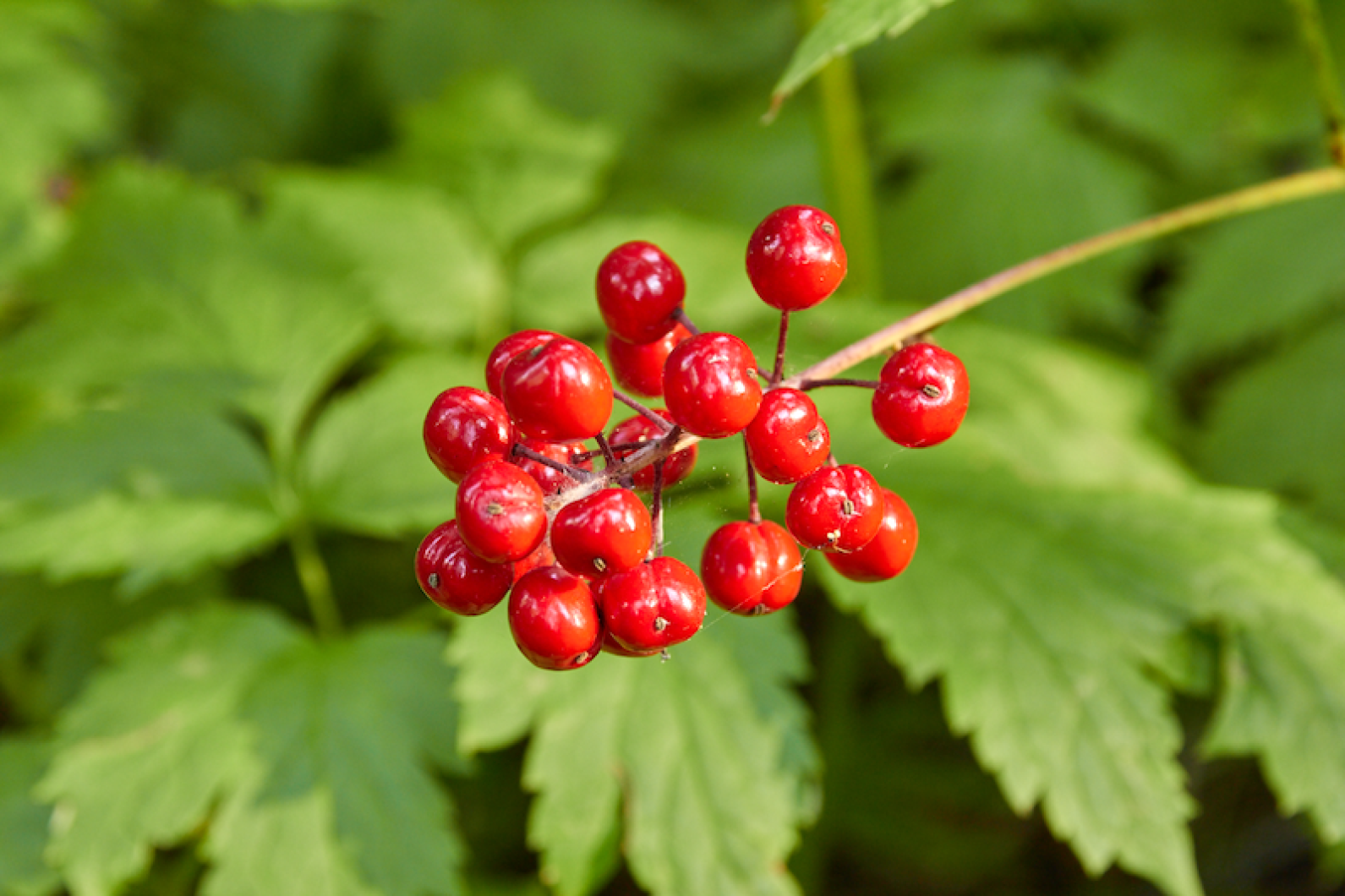This plant should be in a Cynthia Riggs novel.
Well-known and appreciated for her Martha’s Vineyard mysteries, Cynthia’s books include one or more murders and often a botanical reference that provide a clue to solve the crimes. I’ve got the perfect plant for her next story.
Somewhat creepy-looking, rare and deadly, Actaea is the genus of two species of baneberry that would fit right into a Riggs storyline.
White and red baneberry, named for the colors of their fruit, could be the deadly offenders. Baneberry is known for its toxicity — the ingestion of only six berries is believed to cause death. In the case of the young or the old, sometimes three berries would suffice. Luckily for potential victims, the bitter, acrid taste of the berries would make them difficult to consume, and if you could choke one down the resultant burning of the mouth and throat would prevent the consumption of any more.
All parts of the plant are toxic, but especially the berries. Baneberries are known for their deadly consequence. Native Americans reputedly used the berry juice on the tips of their arrows to directly deliver poison to their enemies. Thoreau called the plant “cohosh,” and explained the appearance of the white berries this way: “As if they contained a pearly venom — wax white with the black spot (or very brown), imp-eyed.” The white berries have hot pink stems, and that dark spot on each berry has generated the alias “doll’s-eyes” — delivering the aforementioned creepy factor.
The toxin in the plant acts as a cardiogenic and has an immediate effect on the muscles of the heart. This effect can be fatal, leading to cardiac arrest in as little as 30 minutes. Even with this extreme toxicity, no deaths (fortunately) have been reported in this country from the ingestion of baneberry fruits, though there have been some fatalities in Europe caused by another variety of baneberry.
Even without a known casualty, it is best to not tempt fate. Strangely enough, medicinal uses are attributed to baneberry — including its application to alleviate menstrual cramps, encourage breastmilk flow after birth, wash out the eyes, nose, and mouth of a newborn and treat syphilis. Topically the leaves have been applied to boils and wounds, and a poultice has even been suggested as a treatment for snakebites. It’s possible, though, that in the case of snakebites, if the patient didn’t die, anything could be a remedy.
Don’t even think about trying any of these applications. It’s always better to be safe than sorry, and with baneberry you cannot be assured safety.
Amy Steward, author of The Weed that Killed Lincoln’s Mother and other Botanical Atrocities, knowns the dangers of poisonous plants and provides this strongly-worded warning: “Do not experiment with unfamiliar plants or take a plant’s power lightly. Wear gloves in the garden; think twice before swallowing a berry on the trail or throwing a root into a stew pot. If you have small children, teach them not to put plants in their mouths. If you have pets, remove the temptation of poisonous plants from their environment. The nursery industry is woefully lax about identifying poisonous plants; let your garden center know that you’d like to see sensible, accurate labeling of plants that could harm you. Use reliable sources to identify poisonous, medicinal, and edible plants. (A great deal of misinformation circulates on the Internet, with tragic consequences.)”
This plant is only present in a few wild locations on the Island, so is not likely to be a hazard for many folks, though it can also be found in home and commercial gardens. Remember to be both observant and vigilant, or Actaea could very well become the bane of your existence.
Suzan Bellincampi is director of the Felix Neck Wildlife Sanctuary in Edgartown, and author of Martha’s Vineyard: A Field Guide to Island Nature and The Nature of Martha’s Vineyard.




Comments
Comment policy »